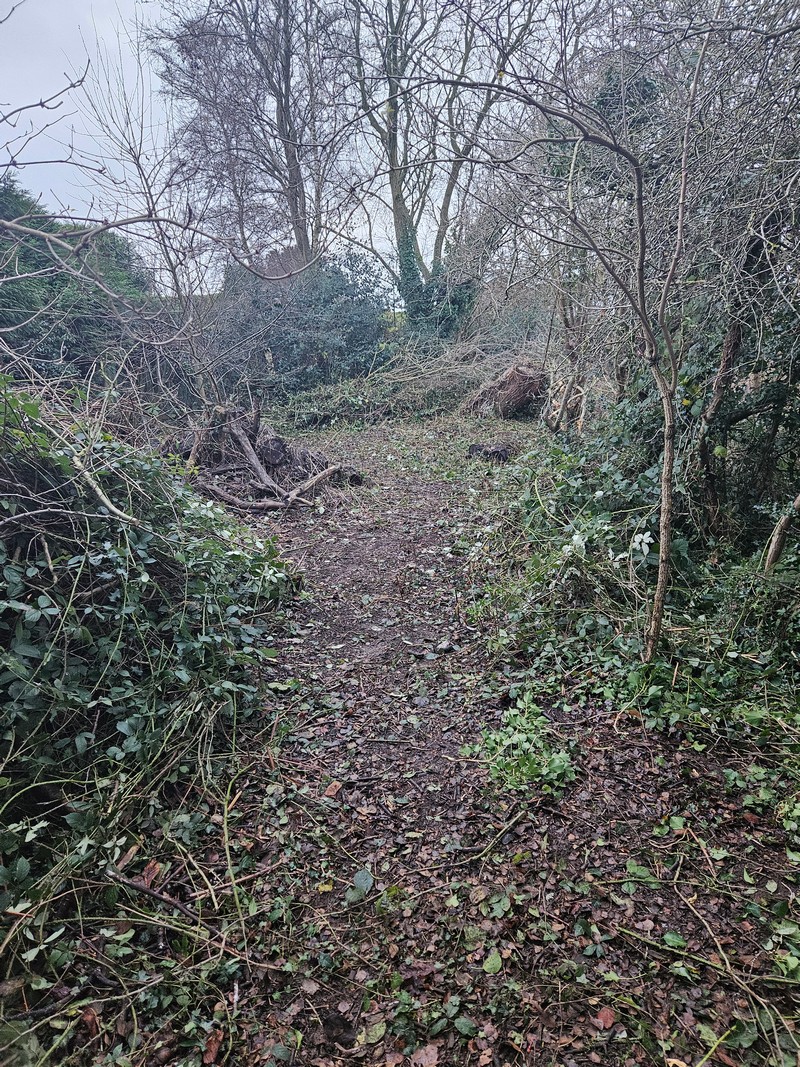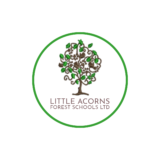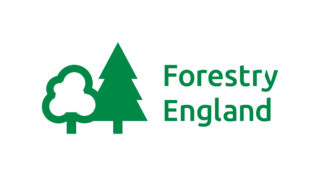Woodland Management
Why is woodland management important for the Forest School Leader?
Woodland Management Plan
First you need to have a plan of what you would like to achieve in your woodland. This is held within the Unit 4 of your Level 3 Forest School Leader portfolio and is a useful resource when planning what and how you are going to manage the woodland. There are many different aspects that you would need to think about – i.e where you’d like it to be in 3 years time, introducing some native species into your area and thinking about the biodiversity that you would like to achieve. I would always recommend that you think about the effect that you want to have on the woodland and how you can mitigate the damage that our footfall will have on it when we use it. For example pathways, tree climbing areas, fire pit areas and den building areas will be things to acknowledge as heading as they are the things that will have an effect on the woodland. Once you have these headings, think about how you can reduce the damage i.e. pathways – reduce the damage by placing bark chips on them to reduce the wear and tear, or only use one pathway where possible. Don’t forget that this is a plan and might change depending on the landowner’s view and your view which may be different.
Coppicing
Coppicing is an old method of looking after a woodland to provide resources to use. A classic case is one of Hazel – this type of shrub can have its life extended by at least triple if it is coppiced regularly. This method involves the cutting back of growth as close to the main stem as possible. Ideally down to ground level so that the new growth in the Spring will double the amount of sky rods/whips that grow and this will increase the resources that you can use in time also. Usually cut back with loppers or a pruning saw depending on the size of the rod and cut on an angle so that the water can run off and not sit on the cut head and work into the wood. Coppicing also works well on Willow, Ash, Lime, Eucalyptus and Horse Chestnut and will give you a sustainable resource to use for years to come as long as you look after and regularly cut back as required. Below is an example of coppicing and how it works – notice the new rods that grow and how many there are.
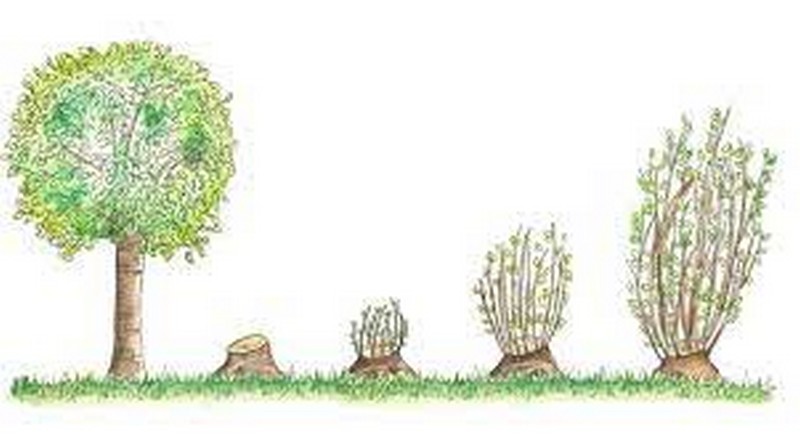
Pollarding
Pollarding is another method of cutting back the branches of the main stem of the trunk so that it prevents any further height growth. This was used in times gone past with Willow to ensure a healthy crop of whips and rods to use as resources whilst giving shade to livestock underneath. This can also be seen on the continent and is used frequently in built up areas to limit the spread of the branches.
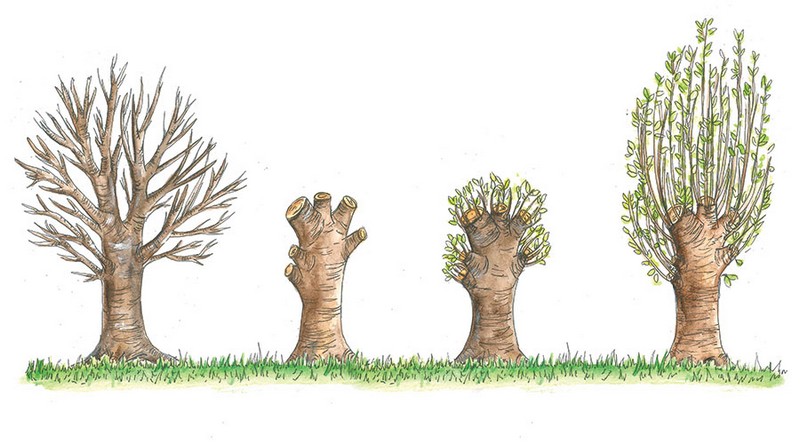
Thinning
This method looks at the woodland and selectively removes trees that are not growing as well as others or if the site is being used for timber production, the removal of trees that aren’t growing straight. Done well, this method will enable both broadleaf and coniferous trees to grow together (as in many woodlands in Central Germany) and increase the biodiversity of woodlands as they grow.
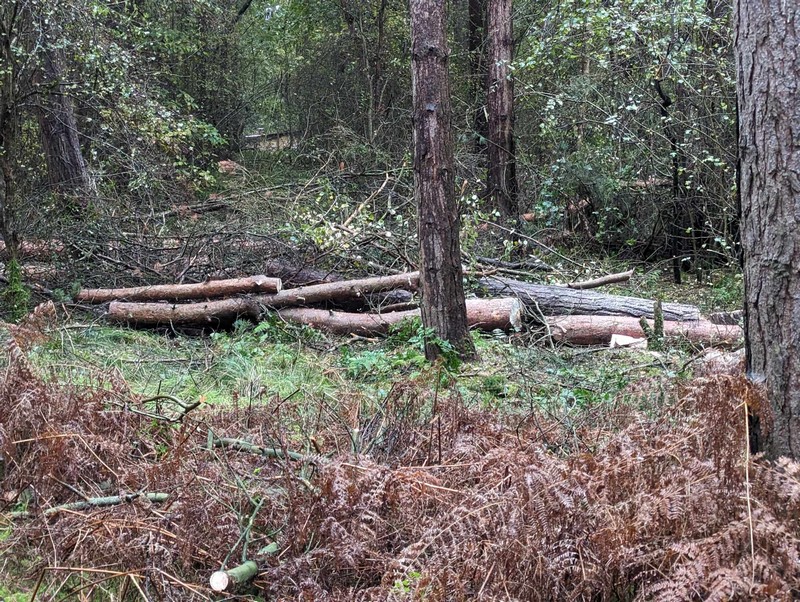
Dead Hedging
This is a great activity to do as a group and will clear up the woodland floor well if you are trimming and pruning branches in the colder months. First you need to select where you want to start and then it’s a case of placing the branches with the tops at one end and the base at the other and just keep on laying on top of each other whilst working backwards to the finish point. To make this even stronger, place poles on either side and then tie together as you build the dead hedge. These work well as boundaries or habitats/mouse motorways for wildlife. Placed in well they will degrade and rot into the ground over time and feed back into the soil.
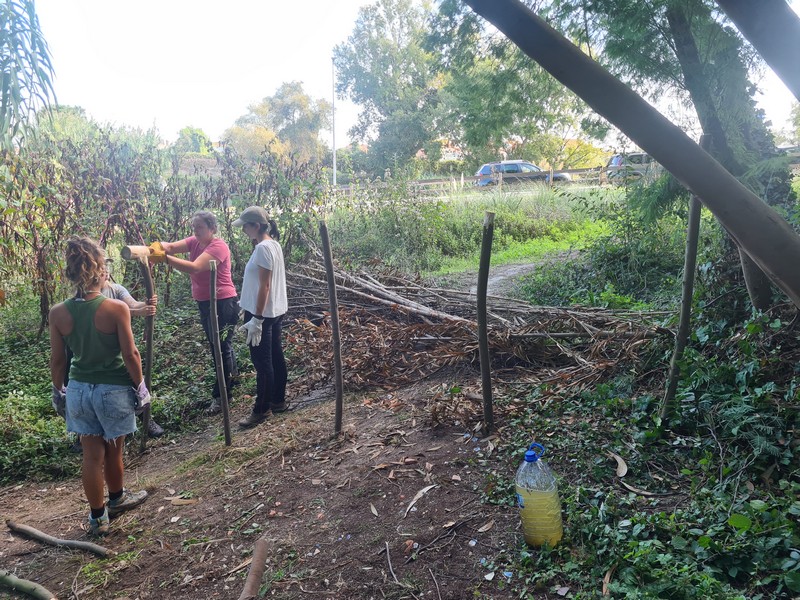
Habitat Piles
This is another method of improving the biodiversity of the woodland is to place habitat piles in which you leave over time. These will also rot into the ground over time and will enable more of the invertebrates to thrive in a ready made viewing area. This can be used as an educational resource too with your learners to show them what lives and grows outside. As the pile reduces it may even start to show fungi growing on the wood.

Removing Invasive Species
This is a problem in lots of areas – in hotter climate conditions, the planting of Acacia and Eucalyptus has led to these trees virtually taking over the countryside for use within the timber industry. In our woodlands we can reduce this effect by planting in native species to combat this and also remove the invasive species as you see them. Pulling out by the roots will work best and keep a weathered eye on the new growth if it occurs. The good news is that you can use this cut timber as a resource to build other features around your site – Eucalyptus is particularly strong and usually quite straight so it works for many structures. Seen below is a bridge completed and made from Eucalyptus and bound together.

Group Work Benefits
Working as a group can have many benefits – not least the fact that it’s good to talk to like minded others as you are carrying out a task. The group will bond together as they develop the teamwork required to clear a patch of woodland and will introduce new friendships also which is good . The physical aspect of working outdoors will also burn calories in an unobtrusive way and will improve coordination and core body strength. The group will also benefit from making the woodland a better and healthier place to go and also better for the flora and fauna that inhabit this area. It is a good educational experience for children and young people to develop an understanding of the natural environment that surrounds them too.
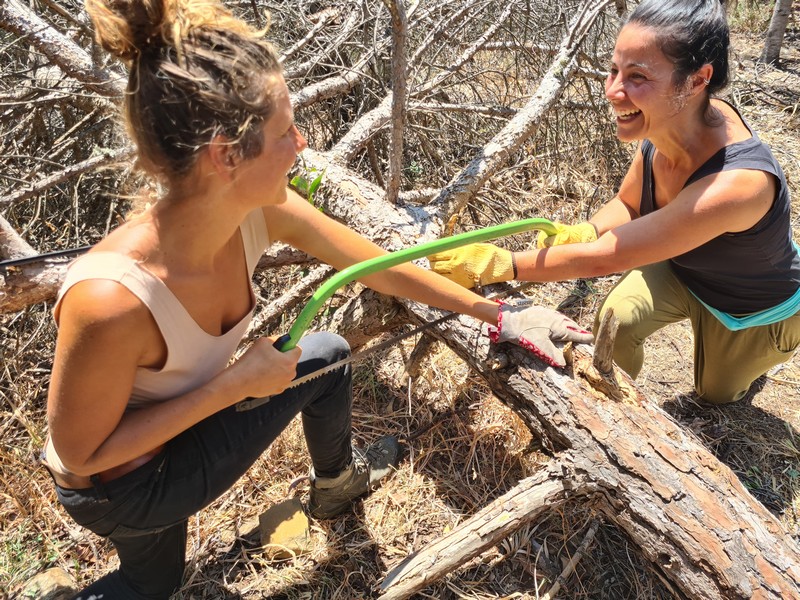
What is possible with the Little Acorns Forest Schools Ltd team?
At LAFS we can provide a service to your school or outdoor area that provides maintenance, management and inspiration to use your Forest School area in a symbiotic way with the natural world. Our practitioners are well practised in making the very best of your area, most times with what you already have growing on site. Our practitioners will work hard to deliver a workable setting that complies with current Forest School advisory safety distances and working practices. For example, a permanent fire pit will consist of a pegged in fire square of 1 metre square in the centre of the fire circle. Seating will then be placed 2 metres from the edge of this fire pit to reduce the risk of injury to your children. We can also provide specialist assistance in the form of woodland management plans that can help your Level 3 Forest School Leader get the very best from your area. If you are interested then please drop an email to littleacornsfs@gmail.com and we’ll arrange a site visit and a workable plan moving forward to enable this to happen. Please see below for some before and after pictures of recent sites.
An overgrown pathway before and after LAFS staff had completed work.
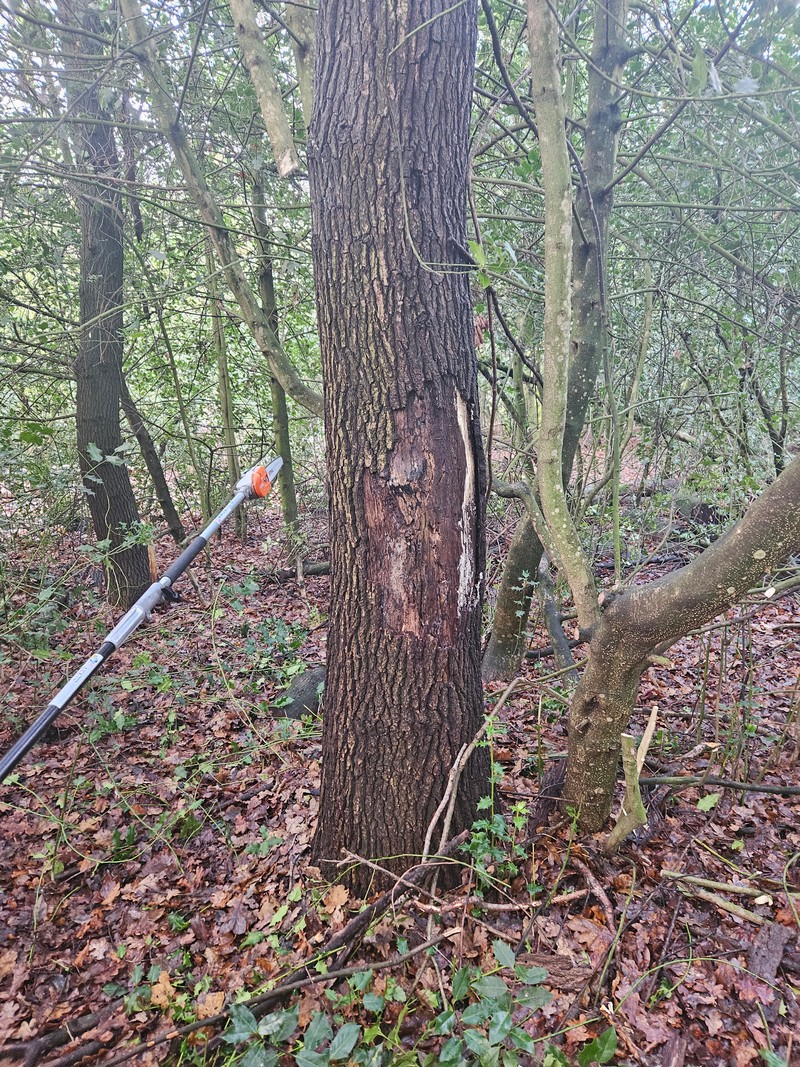
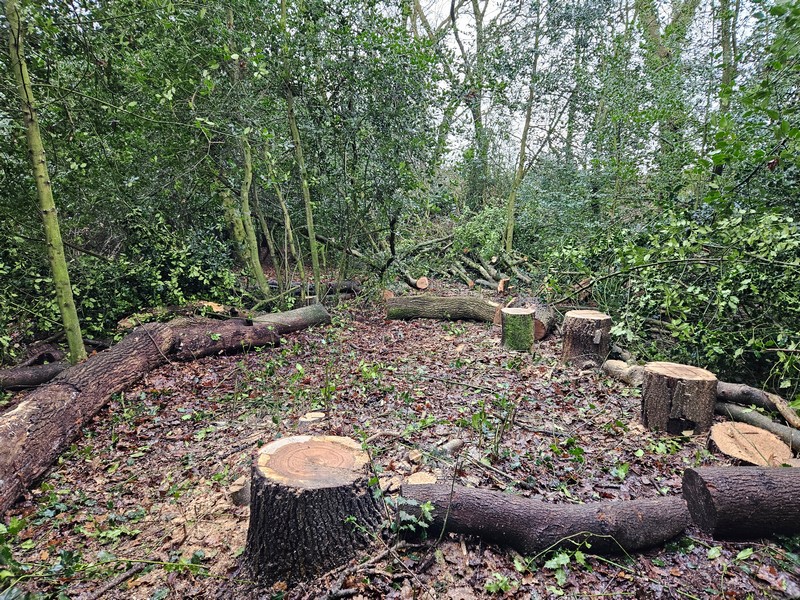
Another site that required a new fire pit area which was constructed using on site materials.
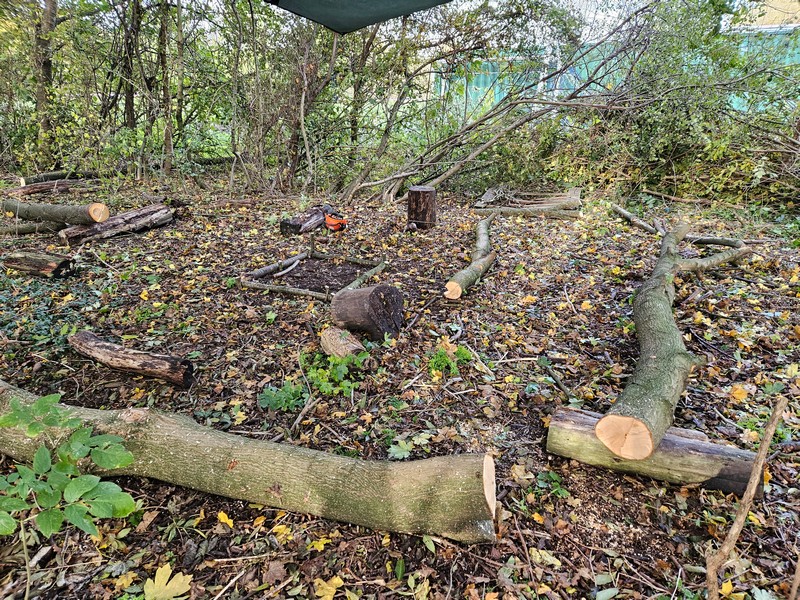
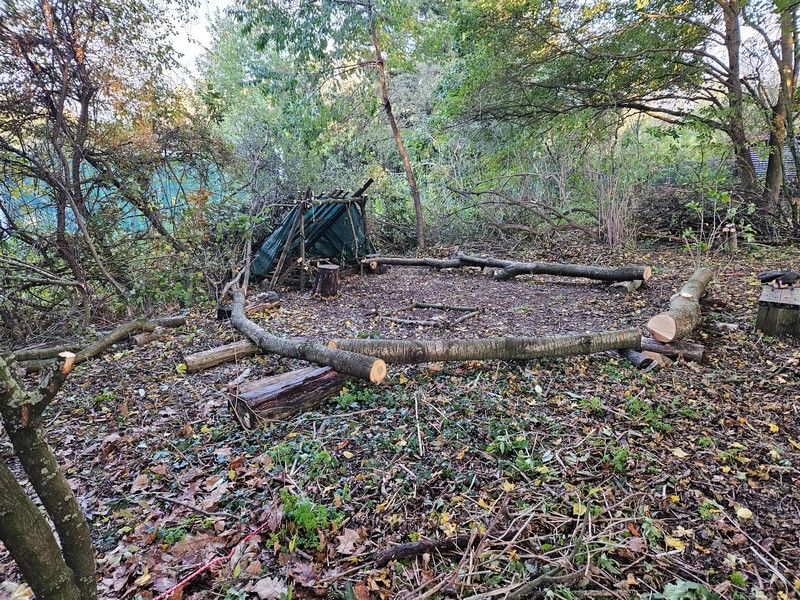
Some tree stumps that have been arranged into an off ground balancing course for younger children to improve core stability and balance.

A completed fire pit area in Santo Tirso in Portugal which is hoped to become a new Training Centre for Forest School training and development in 2024.
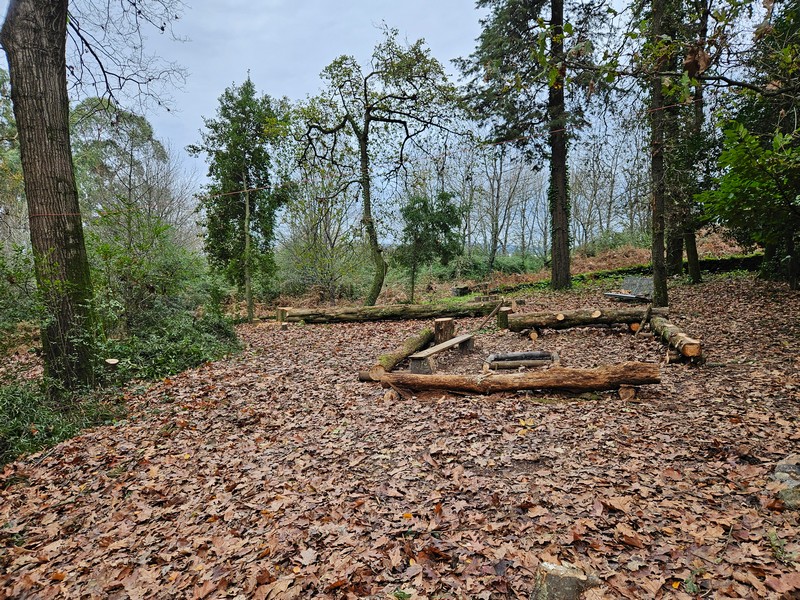
Before and after pictures of a local school that had not used the Forest School area for some time. Our practitioners were able to free up the area for use and make some big habitat piles from the brambles that were removed.

